7 Essentials for a Winning Win-Back Campaign (and Examples)
Published on September 22, 2016/Last edited on September 22, 2016/7 min read


Team Braze
In today’s highly competitive mobile age, churn is a reality for all companies, even for the most successful. We know that 45% of people who use an app in the first week after download will not be retained. But the stakes for marketers to retain app users and email subscribers are high: It’s 50% easier to sell to existing customers than to new ones.
Win-back campaigns via push notifications and emails
Fortunately, today’s marketers are empowered to win over or learn from lapsing customers with “win-back” campaigns sent via push notifications and email marketing.
The first step is to, using customer data, pinpoint the precise moment—before a customer unsubscribes or uninstalls an app—that the user is becoming inactive. This lifespan will vary from product to product, says Jessica Best, Director of Data-Driven Marketing at Barkley US, an advertising agency. For example, a Christmas tree shopper will logically have longer inactive periods as a customer than a shampoo shopper.
Next, using personalization, you can make the case, at an individual level, for becoming active again or encourage them to share insights as to why they’re no longer interested in your products or services. Of course you might want the former more—you want to keep your customers—but even in the latter case, you’ll be able to use these learnings to improve your marketing strategy going forward.
While “it makes commercial sense to retain customers where possible,” advises Helen Keegan, a consultant and event organizer in the mobile industry, and founder of Mobile Heroes, “it’s important to understand why a customer may have lapsed or become inactive” as it’s “not worth hounding someone who is not interested in your product or service.”
When you find out why email subscribers and app users have lapsed, resulting in a lower lifetime value than other customers, you can use these insights to refine your acquisition efforts and messaging, so you can focus on attracting and retaining users with higher lifetime value.
1. Let data guide your campaign
“Study the behavioural data at your disposal,” recommends Chris Gadek, Head of Marketing and Growth at Doorman, an on-demand package delivery and shipping app. “Marketers should know when the greatest percentage of your customers are most likely to drop off. Use that milestone to deliver a compelling message at the moment that matters most.”
He also recommends analyzing which channel is performing best in terms of sending win-back notifications. In his experience, email is more effective. “Users will go back to their email inbox far more frequently than they will go back to their push notification history,” he explains.
2. Ask what the problem is and offer to solve it
“Take the time to understand why a customer has lapsed and [consider] encouraging a customer to fill in a questionnaire,” recommends Keegan.
Basecamp achieves three things with its final send: (1) uses the email as an opportunity for customer research to learn what they could be doing better; (2) reminds the customer of their value proposition; and (3) offers one simple call to click to get the user to visit their account one more time.
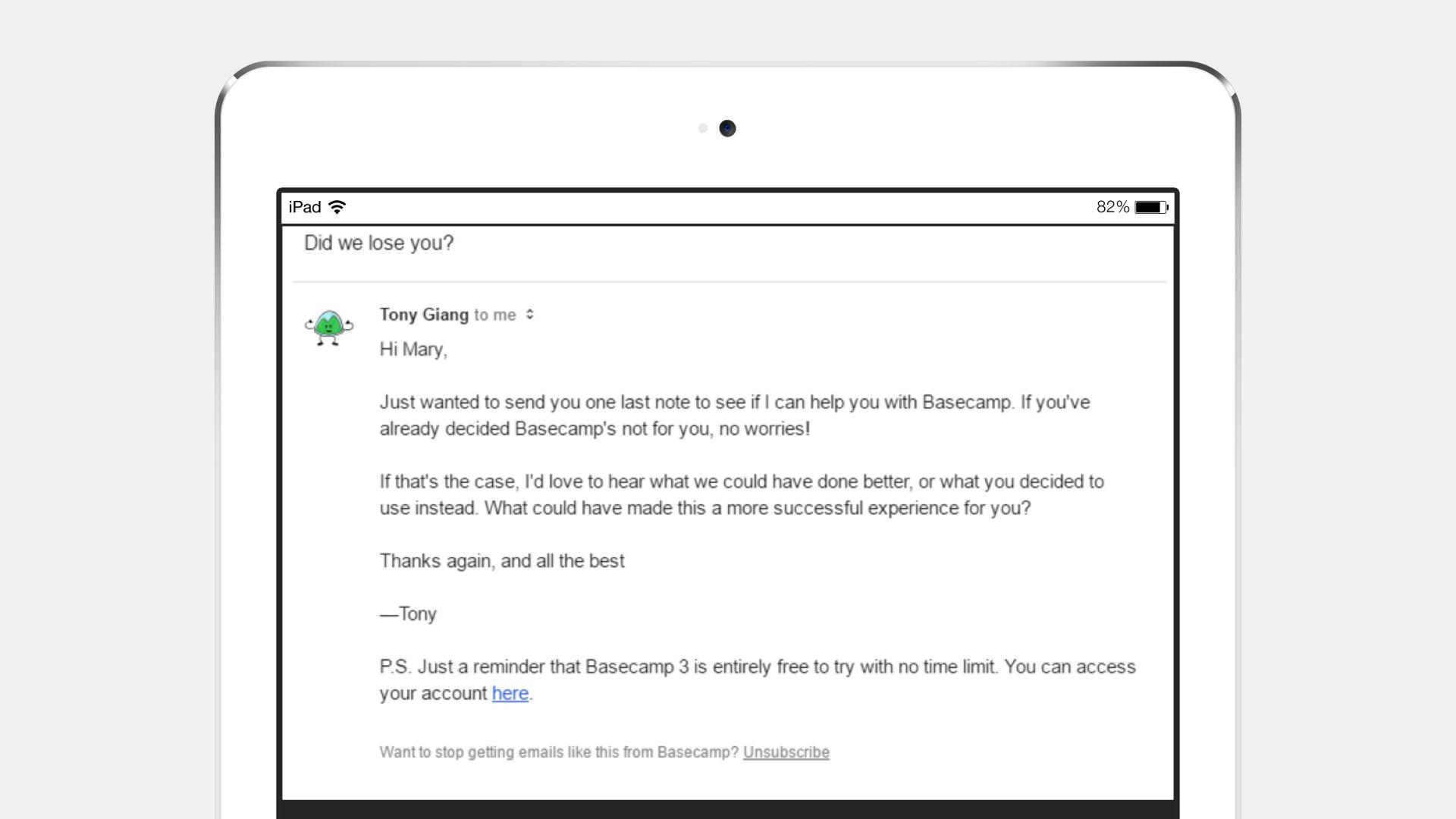
“If marketers do not understand why customers are dropping off, they’ll be doomed to repeat the same mistake and try the same tactics to get their customers back to varying (read: inconsistent) degrees of effectiveness,” says Gadek.
3. Remind the customer what benefits they’ve received
Show “the value you’ve delivered to them over the lifetime of your relationship,” advises Gadek, adding that the example below from Unbounce, which reminded him how long he was a customer and how he benefited from their services, is the most memorable win-back campaign he’s personally received. “If it’s a long term customer, quantify the duration of your relationship too. This is incredibly important; this strategy is exactly how I get 35-40% CTR on my emails when they matter most.” (Keep reading to see his email, too.)
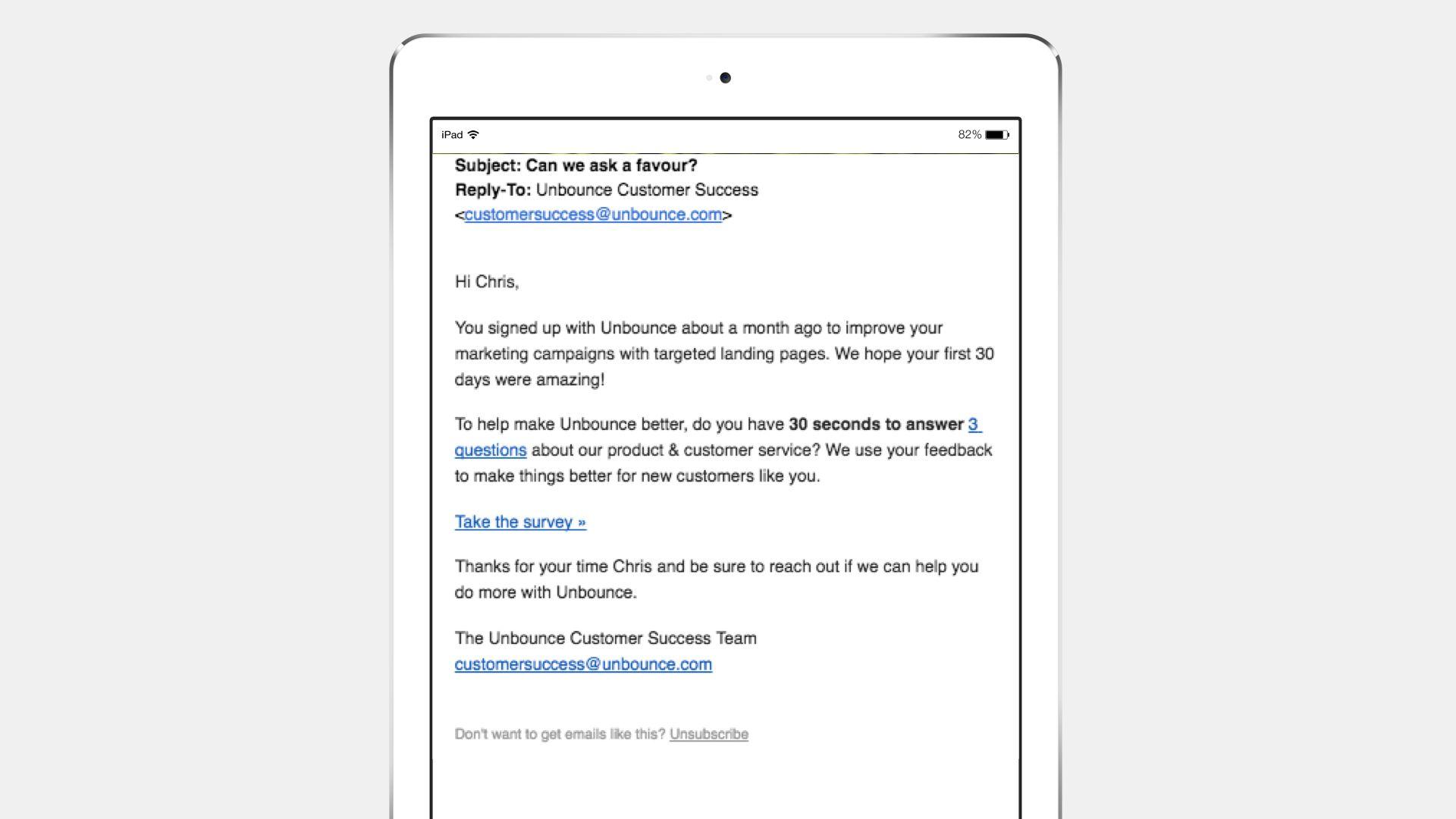
Inspired by Unbounce, Gadek says, “I’ve conducted similar email campaigns and my open rates for said campaigns have hovered in the 65-70% open rate and 35-40% click through rate range, and of those that clicked through, 85% complete the ask.”
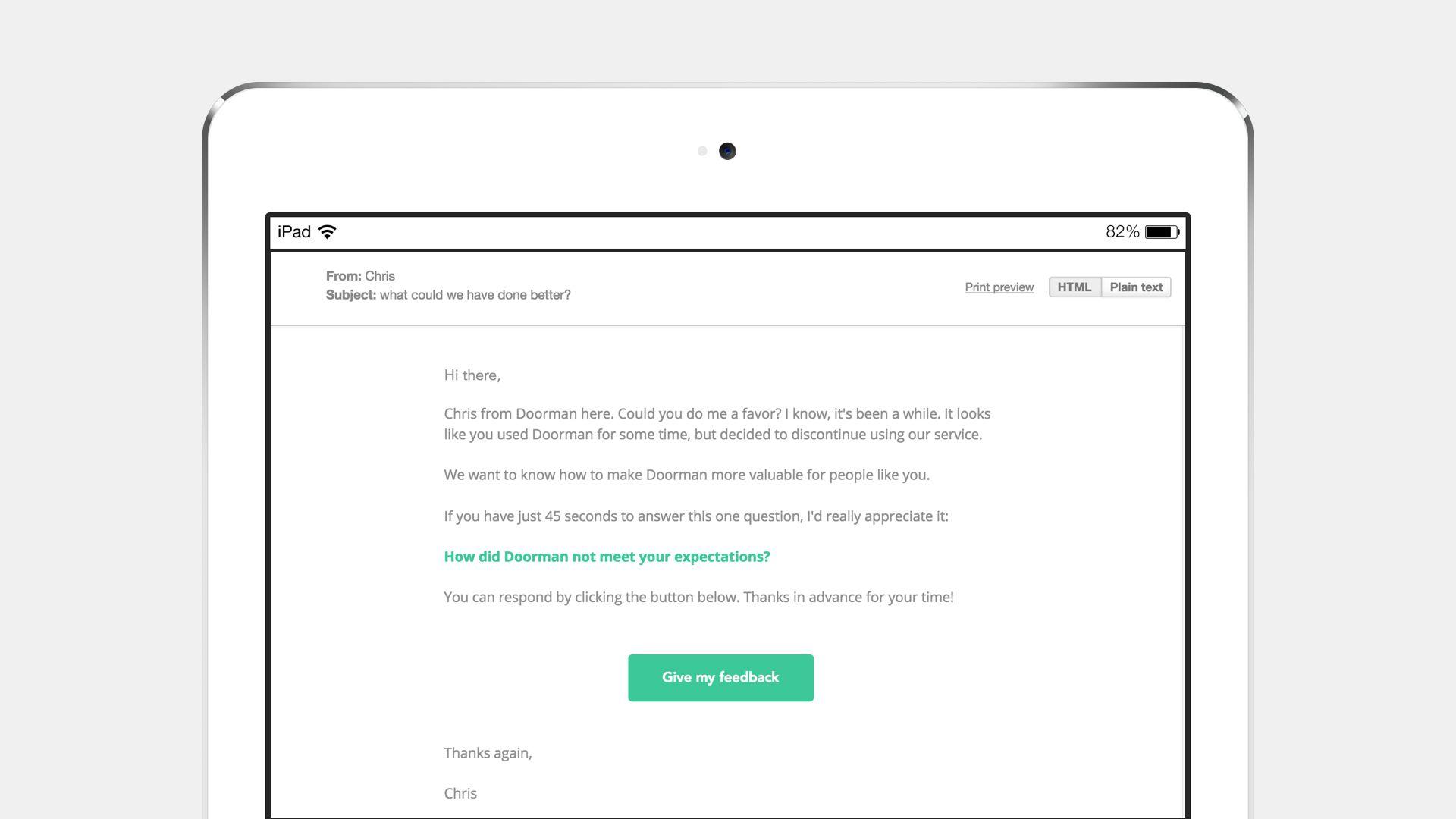
4. Show them what they’re missing
You’ve probably seen a lot of “we’ve missed you” messaging from other marketers. Skip that, and do even better: Focus on what’s in it for the customer.
“Put yourself in their shoes with THEIR motives,” says Best. “Don’t just say what YOU would want. You may not be your own target market. Dive into the mindset of your customer and start to understand why they’ve lapsed, what they need, and what would win them back over. A much bigger discussion: know your customer’s journey and points of truth where they make decisions like whether or not to buy from you again.”
As Dollar Shave Club, Chain Reaction Cycle, and Boden do here, this is an opportunity to restate the valuable or exclusive information, services, or deals you provide.
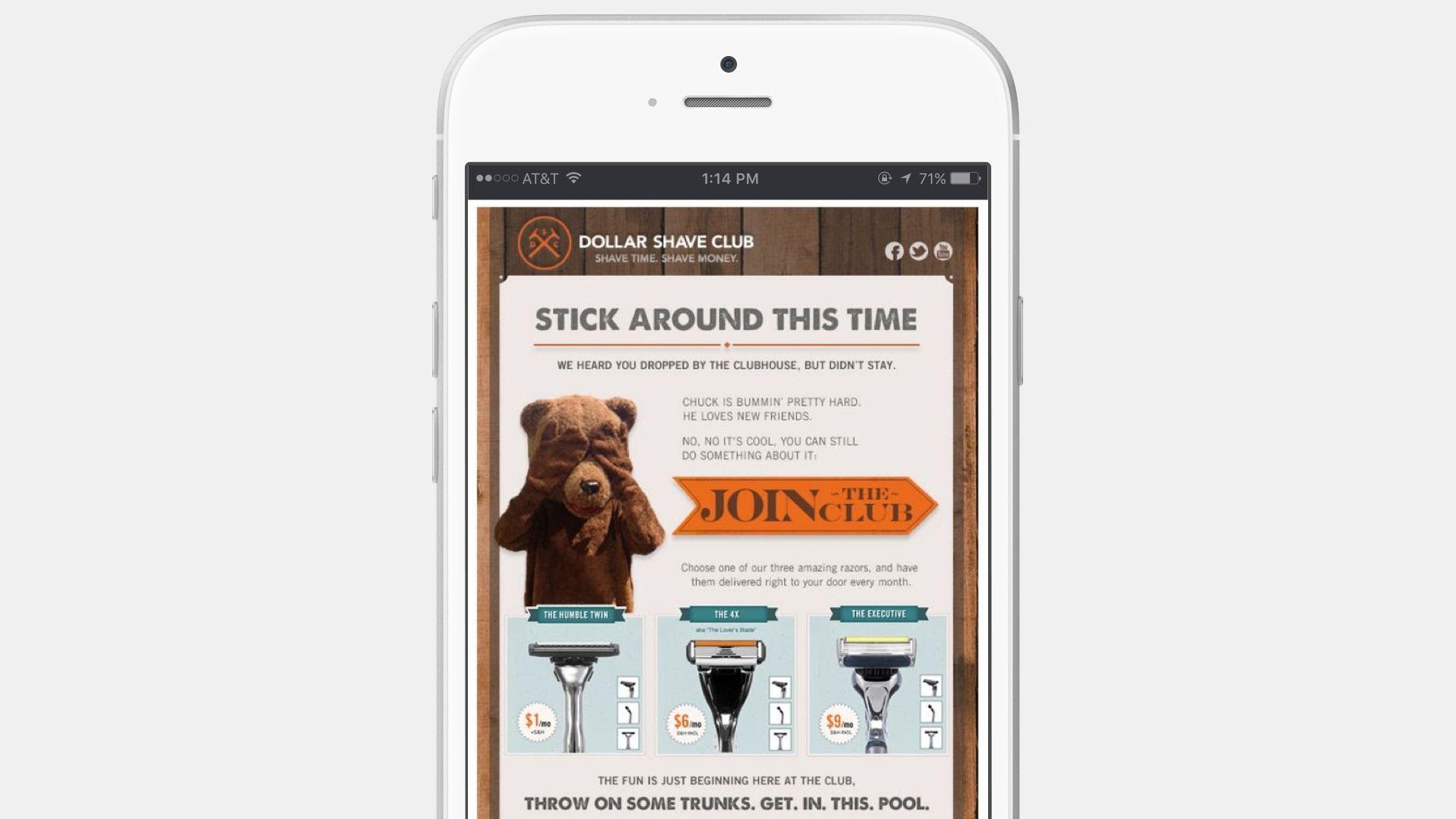
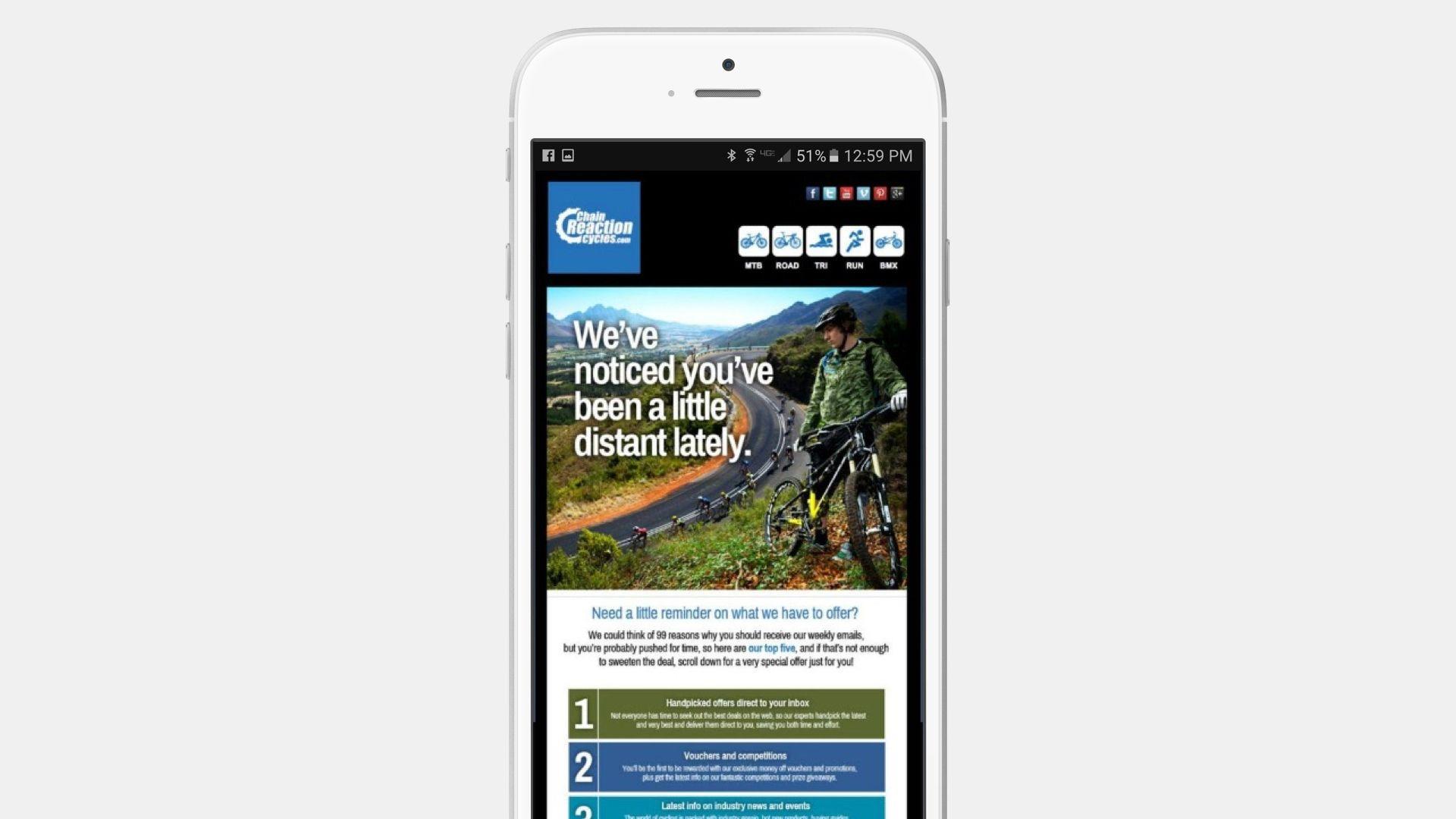
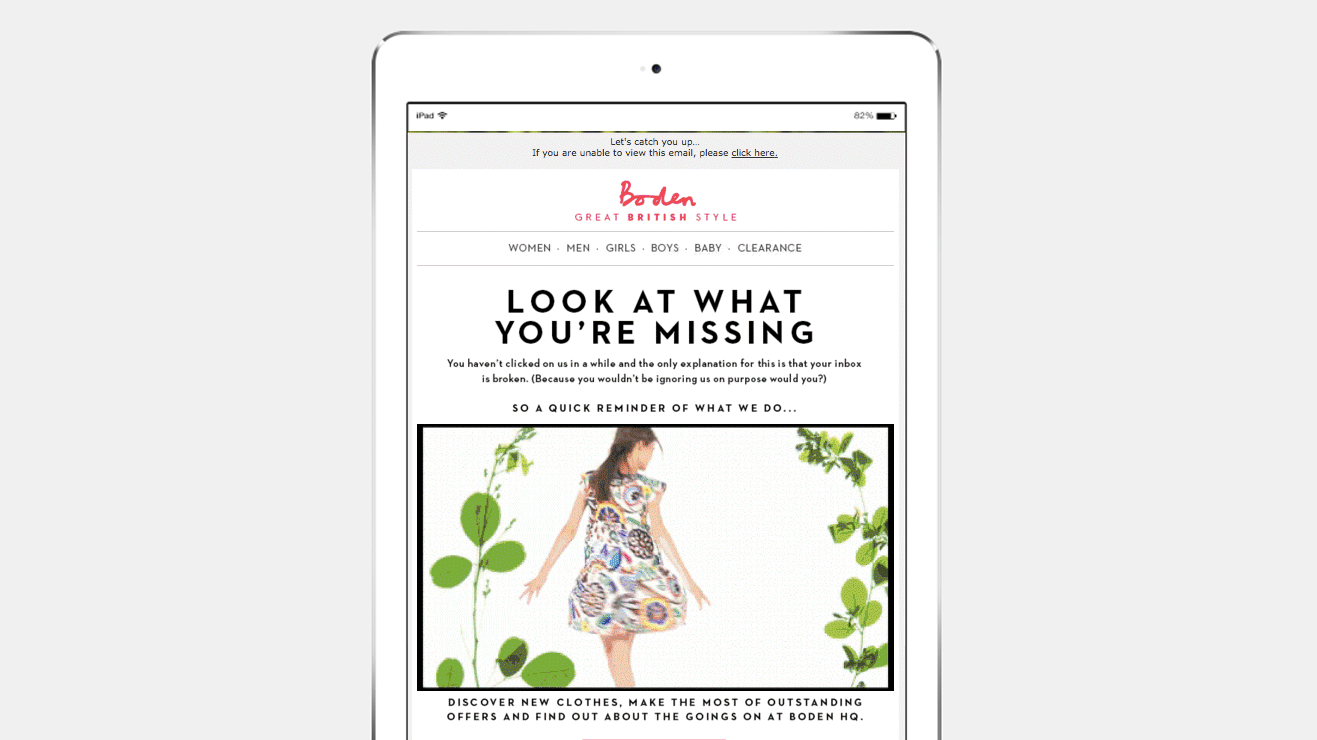
Here Lowe’s takes the opportunity to share updates customers might have missed while they weren’t engaging.
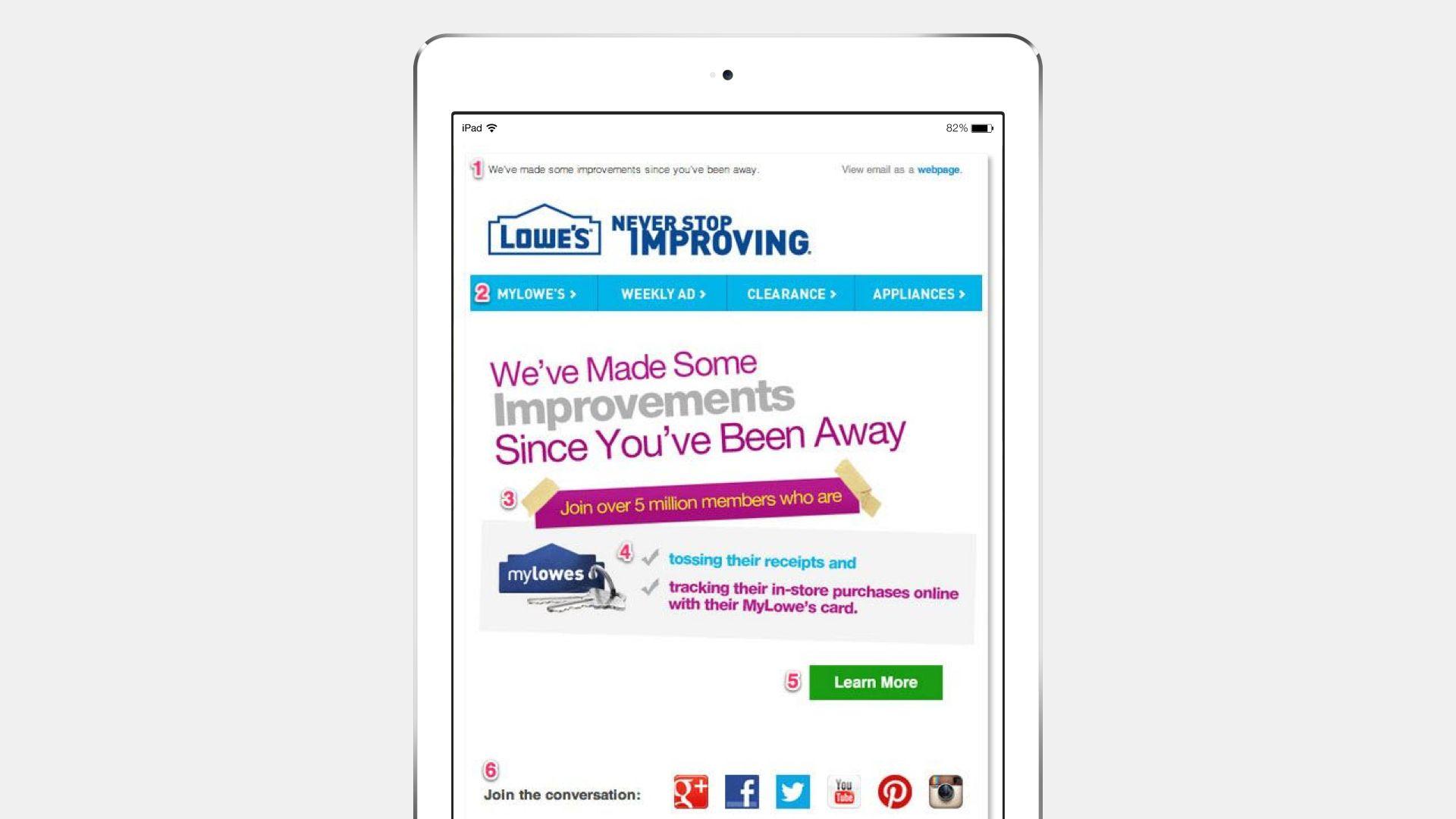
One thing to note: With these design-heavy emails, Gadek warns that nice graphics alone won’t make the difference to a disengaged or disillusioned customer; in fact, overly designed emails can distract from the call to action.
In the push notification space, two very different kinds of apps have a similar take on how to say to customers, “Look at what you’re missing!” Tinder and Pinterest share the numbers of potential matches or pins that are waiting for you to discover.

5. Offer one last enticement
A study conducted of offers included in win-back campaigns found that those that offered dollars off (instead of percentage discounts) performed better. The email below, from Crocs (not part of that study, but a great example) is focused on showcasing the dollars customers can take off.
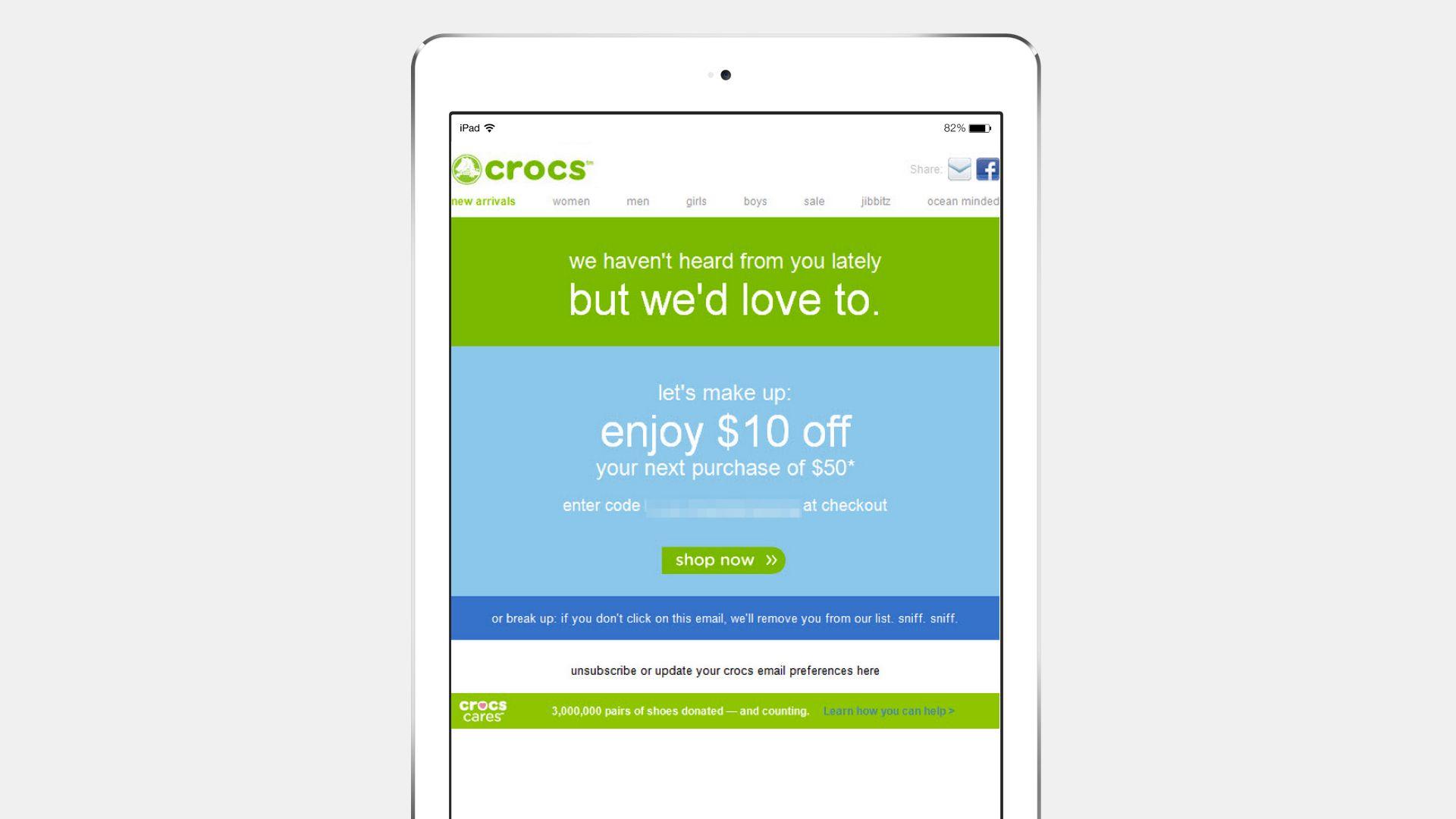
6. Send the breakup message
If nothing’s working, then it’s time to cut ties. Here are some brands that know how to break up gracefully, humorously, and point blank.
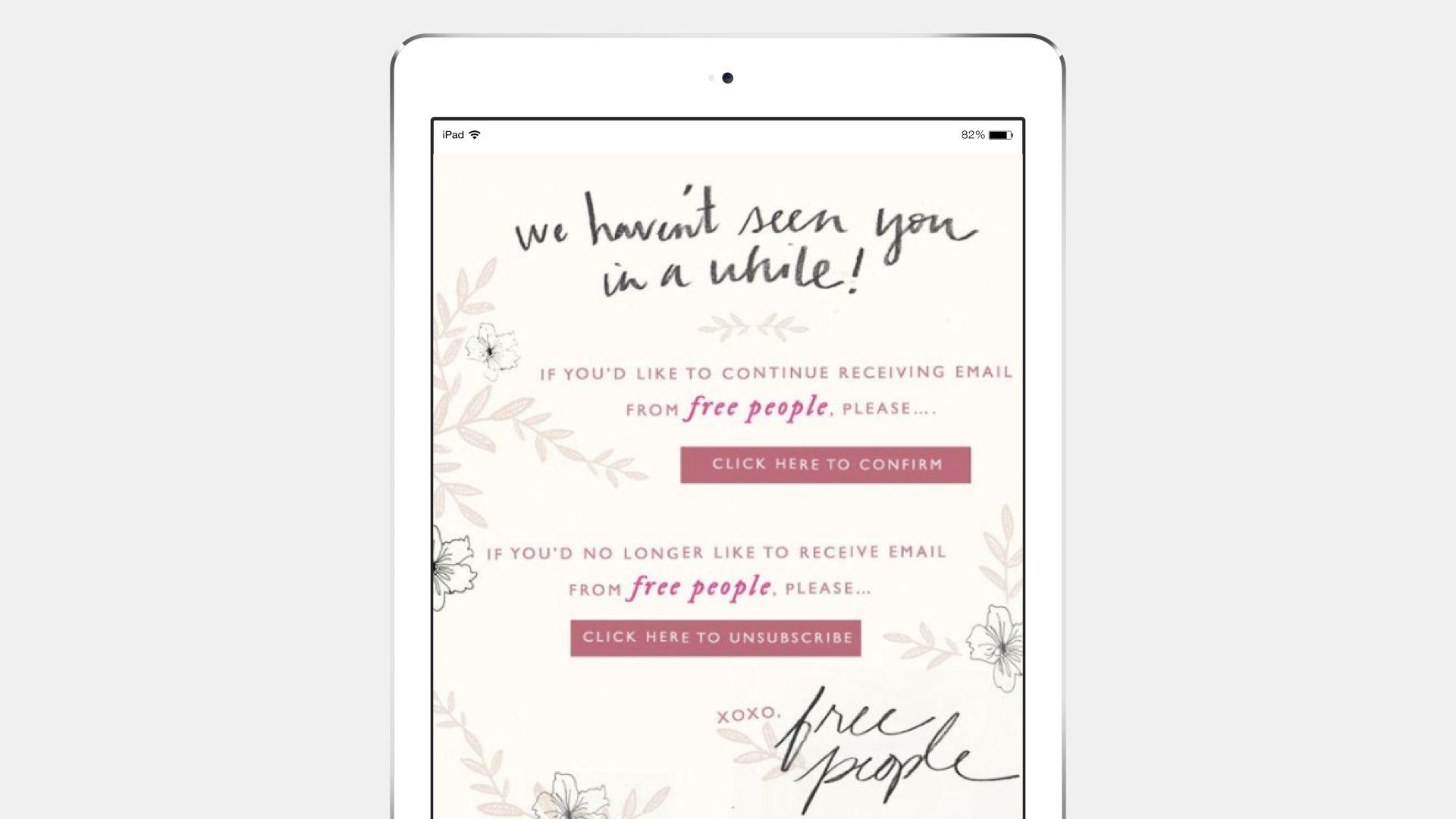
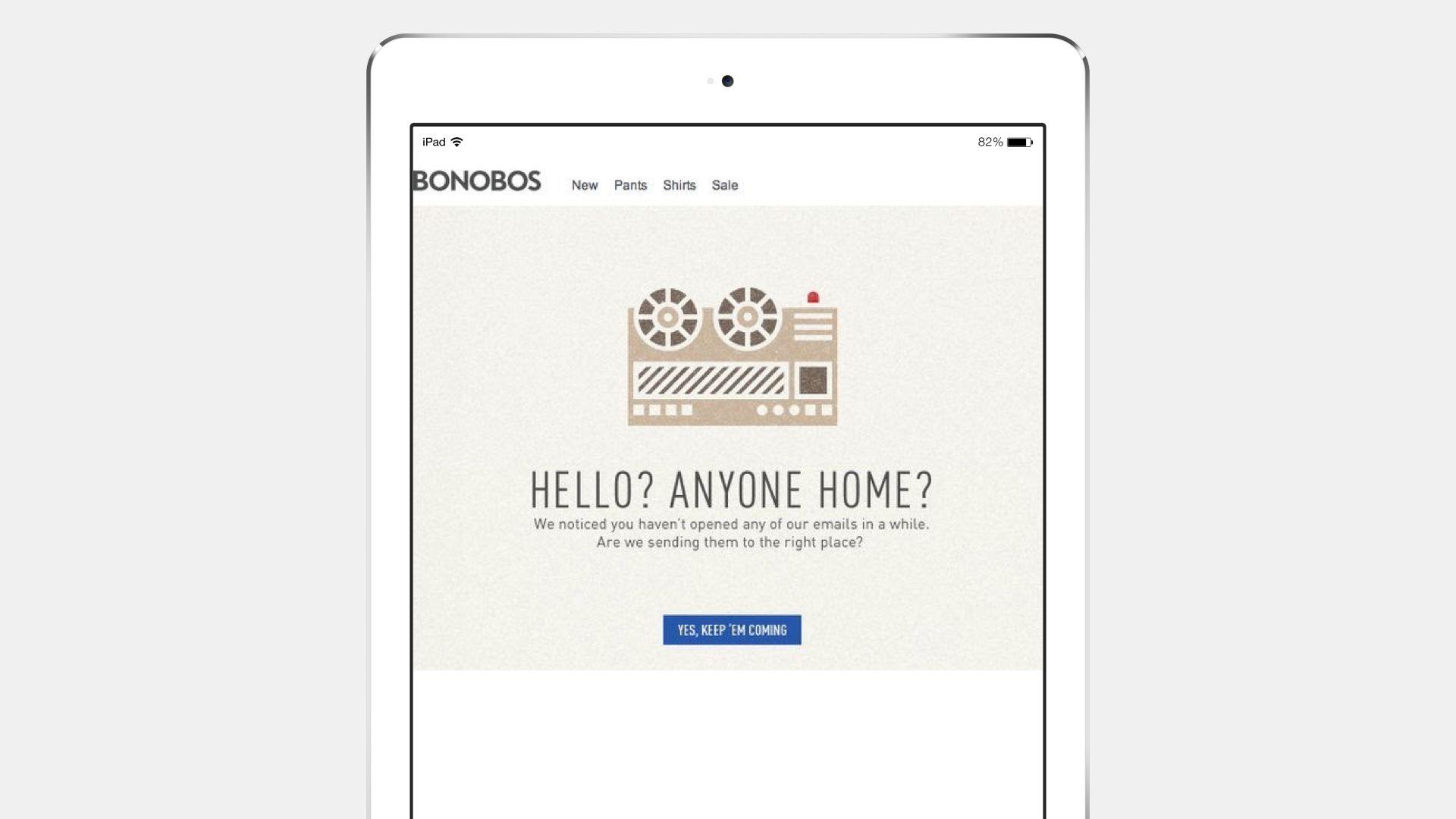
With push notifications, you’ll have fewer characters to do this, but language-learning app Duolingo gets the point across.
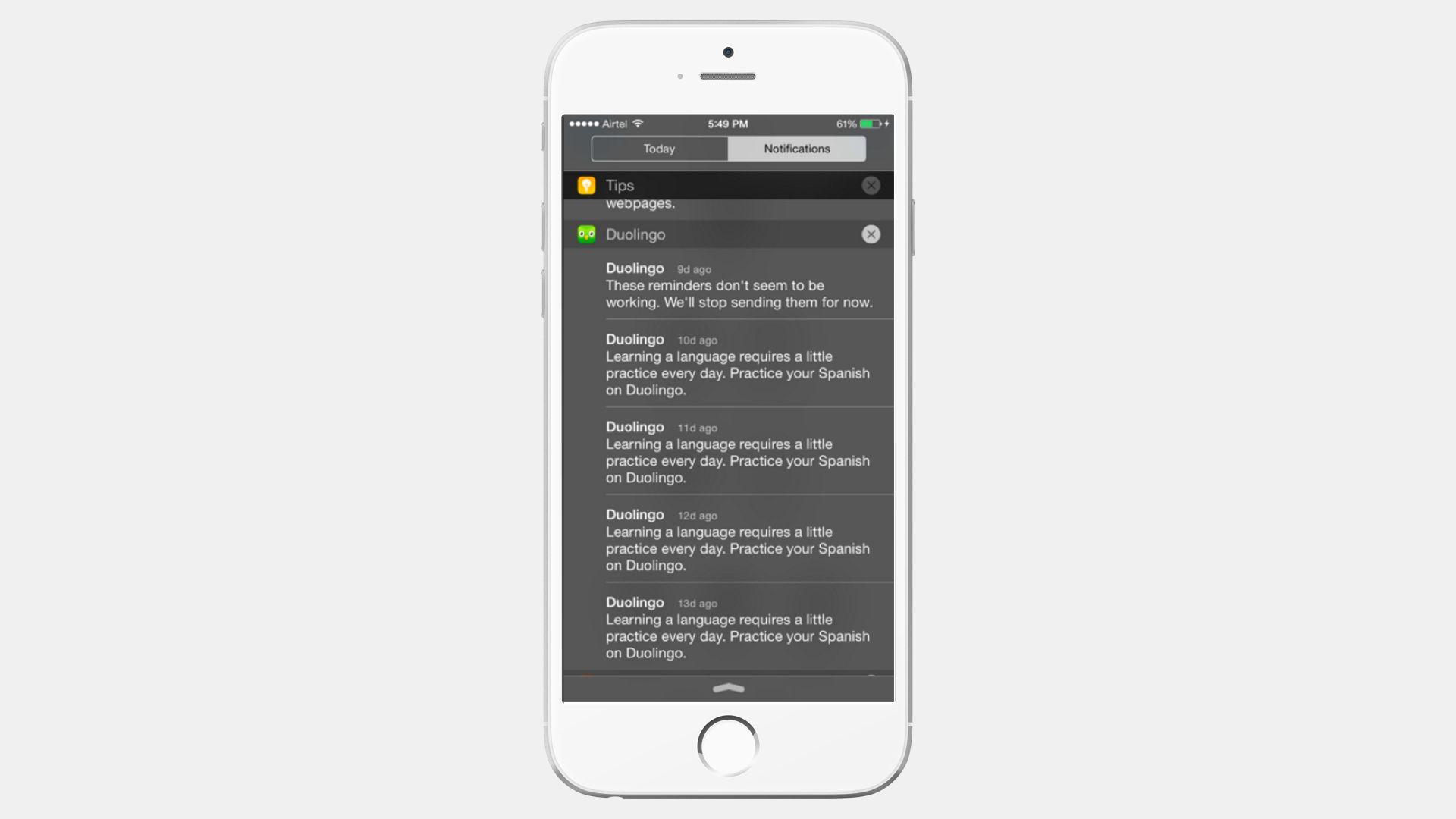
And if the end result is that the user unsubscribes or uninstalls your app as a result of this kind of notification or email, Keegan says that’s part of the point. “It’s better to have a smaller, more active mailing list than a large one that is hit and miss when it comes to results.”
Not all customers will provide your company with the same value, so use your re-engagement efforts as an opportunity to weed out the people who are simply never going to buy or engage.
7. Know when to call it quits
A win-back campaign should be focused in nature. “I send my initial email and one as a follow-up,” Gadek explains.
“Don’t overdo it; otherwise you risk annoying people who will then moan about you to anyone who will listen,” says Keegan.
What results should you expect?
A study conducted to analyze the effectiveness of win-back campaigns found that 12% of emails sent were opened.
Steps to take beyond re-engagement
“If you’re not willing to engage your customers, you’re willing to lose them,” says Best. “Just like any relationship, [customers] need to be reminded why they love you. Fulfill that promise you made when they signed up and ‘listen’ to what they like (or don’t) by watching your click through rate (like!) or unsubscribe rate (don’t!).”
To keep customers who are still active engaged, continuously test, analyze, and improve your win-back campaign content and strategies by taking full advantage of customer data you’ve collected and making the most of personalization. If you leverage your customer data, you can learn when to send, how to send, and when to let go.

Releated Content
View the Blog
The new inbox reality: How iOS changes are reshaping email marketing

Aparna Prasad

Experience optimization: Turning data insights into better journeys

Team Braze

December 2025 Bonfire Marketer of the Month: Jagex’s Emma Oliver
